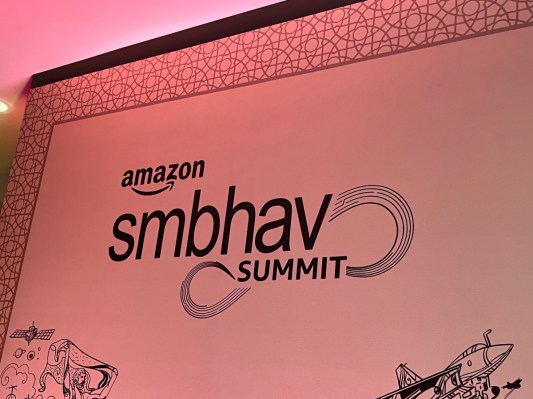Amazon’s march to the Indian market is taking to the rails and the mail. The e-commerce giant today announced new deals with India Post and Indian Railways to boost delivery for small businesses. At its SMB event Amazon Smbhav in New Delhi on Thursday, Amazon also unveiled new efforts to target D2C brands and showcased a new generative AI “assistant” — designed to help SMBs use Amazon.
Branded “Amazon सह-AI” (the सह translates as “co” or “with”), the idea with the generative AI tool is to help usher business customers through the process of both onboarding and then actually using Amazon services. It’s a way of killing two birds with one stone: SMB users who might consider themselves more tech-savvy will be dazzled by the bells and whistles of the AI interface; but also the many SMB users who define the very concept of “late adopter” will in theory get a tool to take away some of the headache of trying to figure out how to use Amazon.
The generative AI-based personal assistant will use large language models to offer product attributes based on the images sellers upload on the platform. It will also respond with market trends and will help new sellers with registration, listing and advertising support through AI-generated responses.
“We have close to 12 lakh sellers with us right now. We are using the technology in some ways to give each of them a personal assistant,” Manish Tiwary, country manager for India consumer business at Amazon India, told reporters on the sidelines of the event.
The move comes just days after Amazon announced it will start using generative AI to assist customers in comprehending product feedback without sifting through numerous reviews. However, that launch is initially aimed at a subset of U.S. shoppers.
Amazon has built a lot of vertically integrated delivery services of its own globally, but in India it mostly works with third parties. The postal deal, expanding on an existing partnership, will cover cross-border logistics and shipments for businesses to help them sell internationally, while the rail deal will expand Amazon’s domestic network in India.
Indian online sellers export their orders internationally through Amazon’s Global Selling program, which the company says already caters to over 125,000 sellers. Through the new partnership with India Post, these sellers can now drop their shipments off at over 100 India Post mail export centers. The consignments will then be exported to overseas customers.
“We are happy to work with Amazon to lower the entry barrier for lakhs of Indian small businesses to leverage the e-commerce exports opportunity,” said Vineet Pandey, secretary, Department of Posts, and chairperson, Postal Services Board, in a prepared statement.
The tie-up with Indian Railways, on the other hand, will allow Amazon to use the country’s direct freight corridors for order deliveries. The e-commerce company said it already started operations along with Indian Railway’s Dedicated Freight Corridor Corporation of India (DFC) on the 659 km long Rewari-Palanpur (Haryana-Gujarat) route and will add and utilise additional freight railway routes and capabilities of the Indian state body over time.
The direct-to-consumer effort is interesting in that it is the first time that Amazon is pitching itself as a fulfillment partner to D2C brands that may not be selling on Amazon itself: that’s something the company already provides in countries like the U.S. (where FBA is a huge logistics provider). Expanding it here is a sign both of the size of D2C in India but also Amazon’s own belief that it has the traction to target those businesses in the country.
“Even if you don’t sell on Amazon.in, by paying certain fees, you’re welcome to use our network, which is the warehousing network, the transportation network,” Tiwary said while explaining the multichannel fulfillment offering.
Amazon will soon introduce a rate card for D2C brands that are not on the e-commerce platform but will use its fulfillment centers under the new model. For the additional fee, the brands will get access to Amazon’s services that are so far meant for sellers using FBA on the platform, including order management, tracking, tax invoicing and shipping. All this will eventually help Amazon get more seller data, which it could use to expand its business in the country by offering more optimized solutions to sellers, and bring it into the competition against Indian startups Shiprocket and Xpressbees.
Even with these new moves to get more small businesses on board, the Seattle-headquartered company is facing challenges in growing its business in India, the world’s most populated country and the second-largest internet market after China. The company has shut down its wholesale distribution, food delivery and online learning businesses in the country over the past year. In recent months, several high-ranking Amazon executives have also transitioned to other companies.
In June, Amazon, which already invested about $11 billion in India, announced plans to invest $15 billion more in India by 2030. That investment, however, includes $12.7 billion specifically for its cloud business in the country, leaving less than $3 billion for its Indian e-commerce business.
